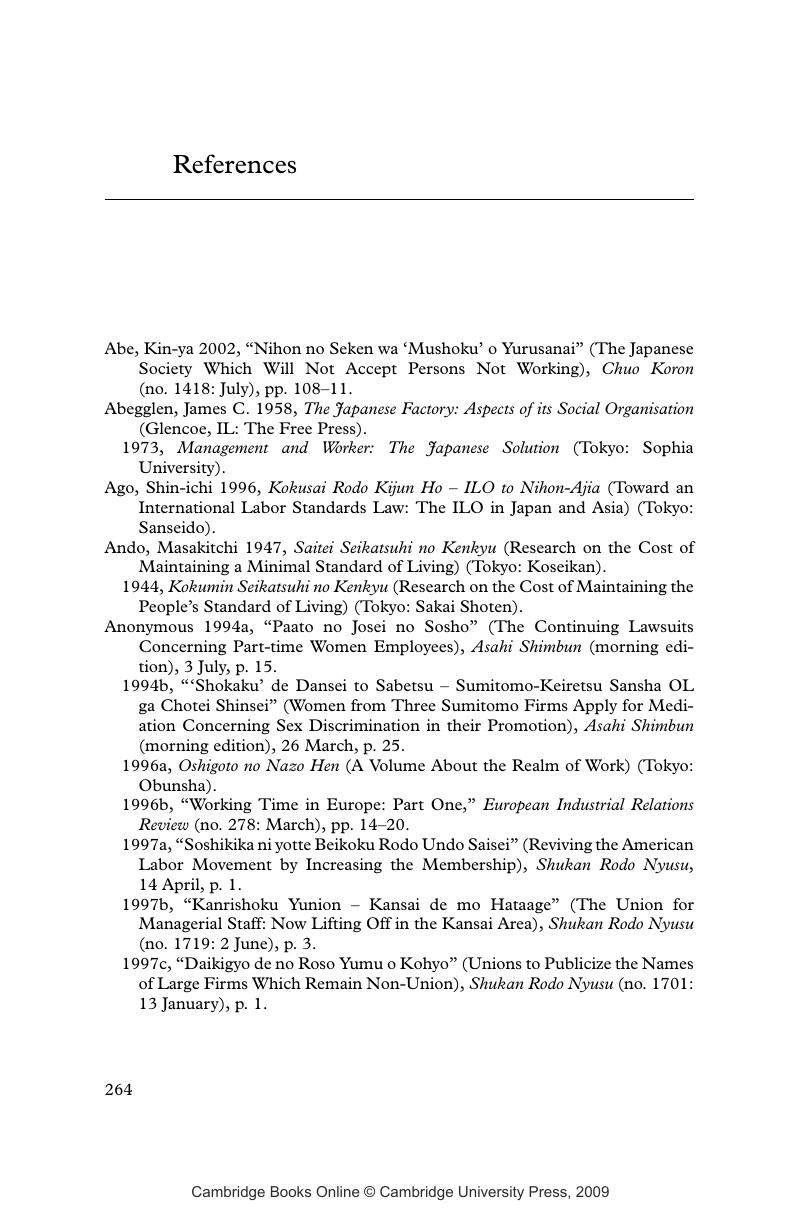Book contents
- Frontmatter
- Contents
- List of figures
- List of tables
- Preface
- Note on transliteration, romanization, and translation
- List of abbreviations
- Part I A context for studying work
- Part II The commitment to being at work
- Part III Processing labor through Japan's labor markets
- Part IV The broader social policy context for understanding choice at work in Japan
- Part V The power relations shaping the organization of work in Japan
- Part VI The future
- References
- Author index
- General index
- References
References
Published online by Cambridge University Press: 03 December 2009
- Frontmatter
- Contents
- List of figures
- List of tables
- Preface
- Note on transliteration, romanization, and translation
- List of abbreviations
- Part I A context for studying work
- Part II The commitment to being at work
- Part III Processing labor through Japan's labor markets
- Part IV The broader social policy context for understanding choice at work in Japan
- Part V The power relations shaping the organization of work in Japan
- Part VI The future
- References
- Author index
- General index
- References
Summary

- Type
- Chapter
- Information
- A Sociology of Work in Japan , pp. 264 - 295Publisher: Cambridge University PressPrint publication year: 2005



